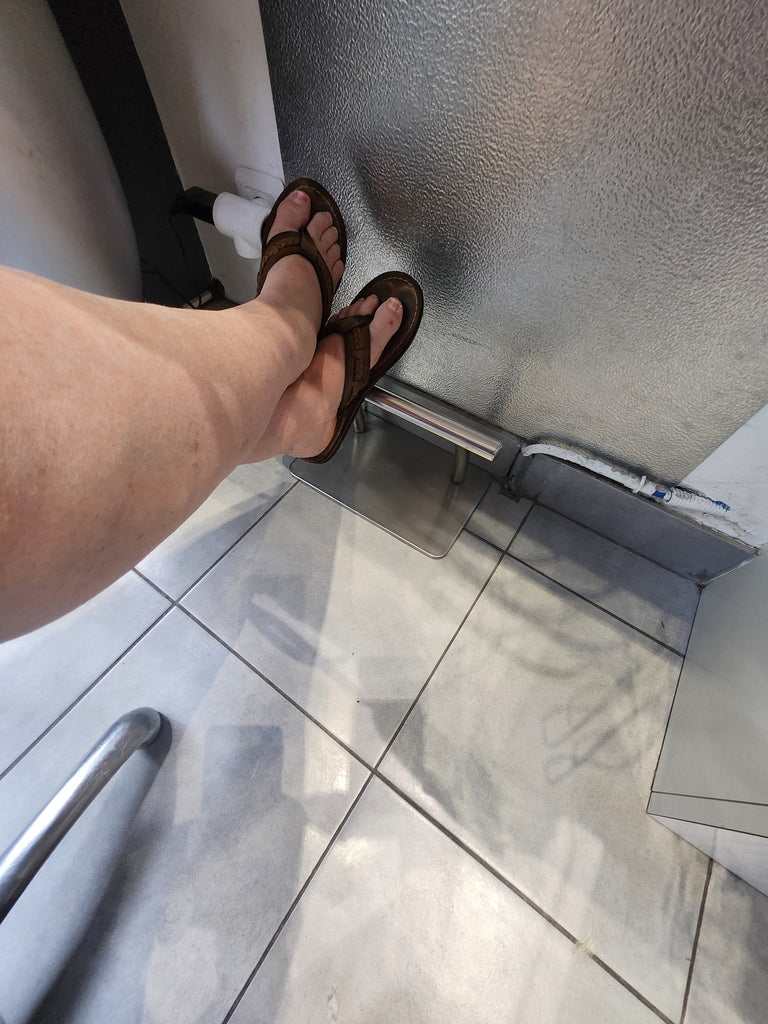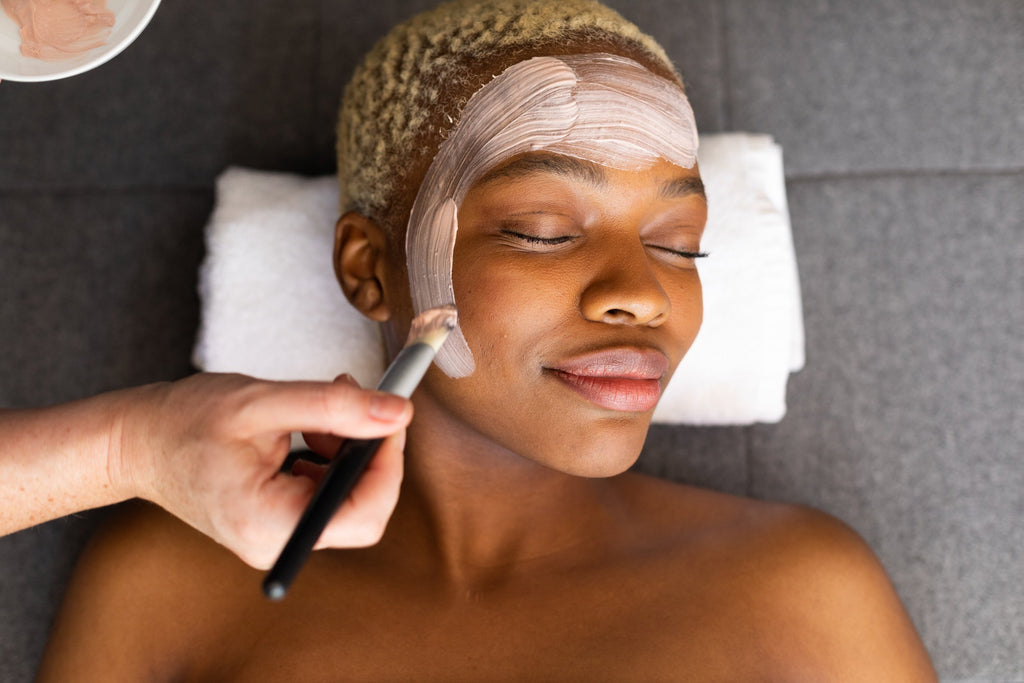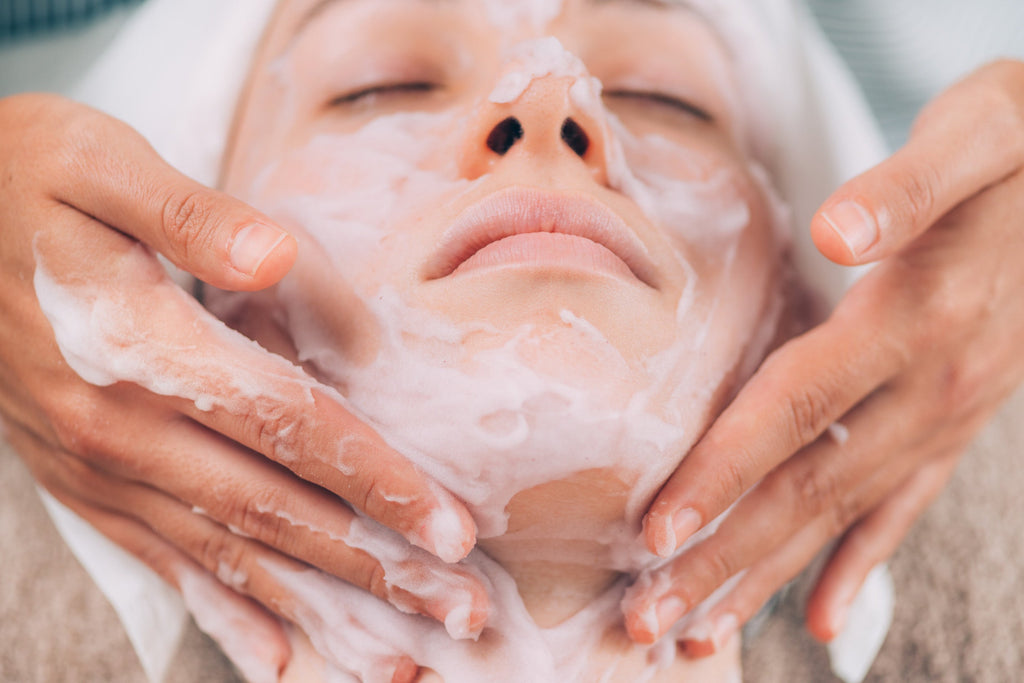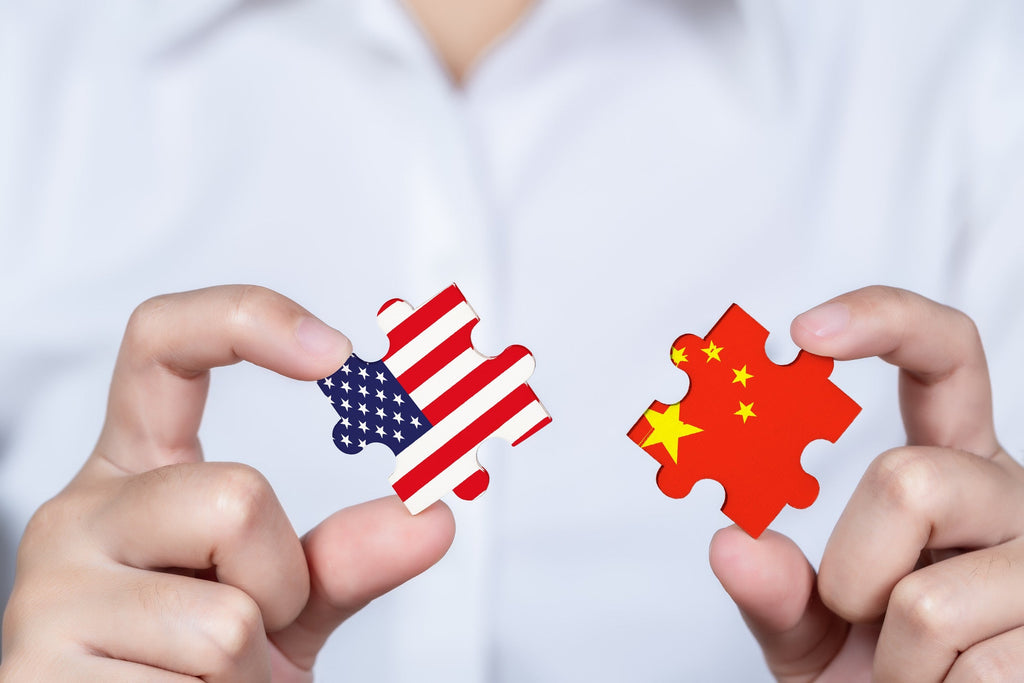This is a professional evaluation of what turned out to be a very poor experience at the YĀTRĀ Urban Spa at Montcalm Royal London House. This is merely a professional opinion of a one-time experience at this establishment.
This was supposed to be a several hundred dollar prepaid massage therapy and spa appointment with add-ons at an upscale spa in London. I arrived without a minute to spare to my 11 am appointment that I had prescheduled and paid 100% for in advance, on their website. I emailed the spa shortly prior to my arrival to tell them that I was on my way, but uber was arriving later than their guaranteed 10:30 am arrival time. I first tried to call the hotel where the spa was hopefully located, but the phone number on the hotel website was not configured correct for an international call and obstructing an international call on my cell phone from the U.S. The address and phone number of the spa was not listed anywhere on their spa website pages; however, you could access the spa website pages through the London hotel website, so I used the London Hotel's info as contact information for the spa.
When I arrived at the spa, I was greeted by staff that were not overly friendly. They told me to sit in their waiting area despite my appointment time was already starting when I was supposed to be on the table! Then a front desk staff member brought me a client intake form which I had already filled out half an hour earlier in my uber, on my ride over. I told them I had already filled out their online intake form and then they took their written intake form away.
I then asked the front desk staff if they wanted me to change into a robe or anything, and they said yes and told me to wait again. I stood waiting for a robe, shocked that they seemed so unprepared for my arrival, which was now overlapping the time I should be on the table receiving my prepaid services. When I asked what was going on with the robe after waiting an excessive period of time for it, one staff member went into another room where the other staff member went, and then a robe with a towel and slippers were then handed to me. I was then told to go to the lady’s locker room to change and that there would be lockers available for my items.
I went to the bathroom first before changing. I could only wash my hands with water because their single soap dispenser at the sink was empty. I also had to go to a second toilet stall because the first toilet stall seat was stained with urine. After using the bathroom, I removed my clothing at the lockers and put on the most ill-fitting robe I have ever worn in my life. The robe’s waffle weave material was of standard/good quality, but the robe was above my knees while the sleeves were almost a full foot past my wrists, and the front was barely covering me. If I bent over in it, I was going to put on a good show!
I returned to the reception area, and someone told me to follow them into a room. When I entered the room, I saw dirty filth on the floor at the entrance way with electrical cords that anyone could easily trip over next to the entrance (screenshot below). I was not warned about the electric cords and luckily saw them when I was examining the filthy floor. Below is the only picture I took at the spa given the email notification I received after this business secured my payment. It said photos were not allowed to respect guest privacy. I feel this photo is not invading guest privacy which is the only reason provided for their no photo notice after nonrefundable payment was collected.

The person I followed into the room did not ask or address me by name, nor provided their name or their function in the spa. They instructed me to lie face down on the massage table and to cover myself with a towel. It appeared they had professional spa tables with a hole cut out for the face during pronated position. The table draping was all perfectly coordinated matching brown color. I asked the woman’s name who led me into the room, and if they were my service provider? She told me she was going to provide my massage and her name. I then asked her what my appointment would entail, given I was super interested in their 5-element theory services. She then responded it was an aromatherapy appointment. So, I asked her, what type of aromatherapy, and does she know which essential oils are being used for which element? She responded I was going to receive zest massage oil and it was for fire (although she cited a different element before correcting herself to fire). It was then that I realized this was going to be a simple preblended oil massage, and there was no true 5-element theory being practiced here.
I pulled the towel back on the massage table as she had asked me to get onto the table in pronated position. She then immediately took the towel from my hand and placed it back over the table sheet that was covering the entire table, with a small hole in it for my face. When I realized that she wanted to leave that small towel over the entire table sheet to keep the table sheet covered or clean, I realized there was no sanitary barrier provided for between my face and the table sheet hole. So, I told her I wasn’t comfortable placing my face on the table sheet if it wasn’t clean, and she responded to not worry about it because they change it once a day. I had an 11 am appointment, so I started to wonder how many clients’ faces had already breathed into that terry towel table sheet fabric before asking me to place my face directly in it too.
I then told her I really was not comfortable placing my face on the table sheet because it seemed unsanitary, so she rephrased and responded: I mean we change it after every client. Unfortunately, that’s not what she had initially said, and those are extremely expensive table sheets. Without telling her, I realized those table sheets could run around $100+ each. I personally doubted they were being laundered and replaced with frequency between every client, because that would seriously deteriorate the table sheet’s life use, not to mention they’re extremely bulky, and I couldn’t see where they would store such bulky items to replace between every client. Without saying so, I believed her first statement was true, and the table sheets were not to normal sanitary standards if a client is breathing on them without replaceable barriers, and if that draping is only replaced on a daily basis.
She then started folding a towel to create a better barrier between my face and the terry towel facial hole of the table sheet. Knowing that bacteria or viruses such as COVID-19 could have already contaminated the massage table sheet, I told her I was simply going to place the towel over the hole and turn my head to the side instead of place my face in the hole. This would be much less comfortable for me, but I felt that it was better than possibly getting sick with COVID or other infectious disease. She accepted this and left the room so I could get onto the table. When she returned to the room, she asked if I wanted the table heated and I responded yes. I heard a bunch of beeping which sounded like she was increasing the table temperature with a heating apparatus; however, no additional heat was ever felt. I believe their table heating apparatus was broken. She never checked in about temperature again throughout the entire massage therapy appointment.
The massage therapist’s initial contact through the towel was divine. It was firm, confident and complete. She moved with ease over the towel with compressions prior to undraping my back to start the massage. The initial aromatherapy oil application was average and then a superior back massage followed. My ankles were not properly bolstered while lying in a pronated flat position, so I asked if she could provide bolstering for my ankles and she did. It seemed like they had setup the table for massage with a rolled up hand towel near the ankle area which provided less than 2” of ankle bolstering prior to mounting of the table, which is not effective nor acceptable practice.
After fulfilling my ankle bolster request, she continued her back massage with superior strokes that were an excellent speed for the pressure. She had a good variety of strokes that went from small to large, light, medium and firm pressure, fingertips, full hands, heel of the hand, palms and forearms. It was all good with the exception that she occasionally dropped to a one-handed massage which still felt excellent. While most therapists would maintain 2-handed contact through the massage, her 1-handed work was of such high quality that you don’t really miss the 2nd hand lack of contact. We simply believe that 2-handed contact should be maintained at all times during massage therapy practice, although if someone was to occasionally use 1-hand instead of two for full body massage therapy, we would say this was a perfect example of where that practice could be acceptable given how complete and incredible it felt.
During my back massage, the massage therapist lifted my arms that were lying on the table next to my body, and she hung them over the sides of the massage table with my elbows flexed at a 90-degree angle. This was acceptable, until she started performing shoulder depression techniques. Hanging my arms over the sides of the table elevated the super vertebral border of my scapula which repeatedly made bone-on-bone contact with her knuckles during her shoulder, upper back and cervical massage, which was uncomfortable.
Her posterior leg massage was wonderful. She undraped both legs and worked on them simultaneously. Her strokes included superior travelling lateral lower extremity massage strokes immediately followed by inferior travelling medial lower extremity strokes. So, it was an outside inside circle of massage throughout the lower extremities leaving them feeling quite complete. She then continued on to perform more posterior leg massage, one leg at time to complete the pronated work. The therapist appropriately redraped each area after completing the local massage.
When she finished pronated massage, she excessively tapped my shoulder despite myself being wide awake and asked me to turn over. She left the towel flat on my back without adjusting this draping out of the way for me to move, which was awkward. I began to turn over to supinated position, and she then quickly grabbed the towel and lifted it so I could turn more easily. She did not move the ankle bolster before she asked me to roll over either. This left the bolster in the wrong place when I rolled over into supinated position, so I had to ask her to move the bolster into an appropriate position underneath my knees so that I could be comfortable on the massage table.
Once I turned over into supinated position, she then performed similar bilateral work to the anterior lower extremities with her continued superior massage therapy strokes and contact. She performed foot massage while working the legs. She continued her massage to my upper extremities which was unremarkable when compared to the application in other areas of the body. She finished her massage with my head neck and shoulders with continued high-quality massage.
When performing full body massage therapy sessions, especially when a client is wearing footwear that exposes their feet to the elements, such as flip flops or sandals, we would prefer to see a therapist working on the feet last or wash their hands prior to working around the face after touching the feet. This was not done in this appointment.
During the entire massage, the service provider did not check in with me about her massage pressure, areas to work on, music or temperature. The table temperature she stated was going to increase at the beginning of the massage was never felt, and she never checked in about that adjustment either. I did not ask for adjustments for any of these measures beyond appropriate table covering and massage bolstering.
The massage therapist unfortunately suffered from halitosis, aka bad breath. In addition to the offending odor, I suffer from an allicin allergy, and I detected what smelled like hints of garlic which made me feel slightly sick during the massage, especially during the supinated upper body work when her airway was closest to my olfactory senses.
When my massage was finished, I could hear her washing her hands in the treatment room sink. I was then asked to get up and put my robe on and exit the treatment room. She then asked if I liked the appointment. It felt more like she was seeking praise rather than anything else. If I had wanted more or less pressure, alternative music or anything different, then it was too late to make that accommodation.
I did have other services scheduled at the spa, so I put my robe on and went to the front desk to inquire about what I should do to receive the two other services I had scheduled. The front desk staff member seemed shocked at my question and told me to have a seat in the waiting area, again. I sat, waited and watched commotion between the front desk staff and therapist who had just performed my appointment. Several minutes later the therapist who had just completed my massage asked me to follow her back into the treatment room to perform the other scheduled services. It should be noted that this establishment had me pay for all services including the add-ons in advance, but seemed unaware that I had scheduled them, never mind the fact that I had already paid for them too.
My massage and add-on appointments were performed in a couple’s room where they were two tables with plentiful room for both. The spa itself is in the basement of the hotel and is of standard quality or layout for the potential of an upscale experience.
After my massage and add-on services were completed, I was able to enjoy the establishment’s hydrotherapy offerings including the pool and hot tub that is available for both male and female guests. Both the pool and hot tub were perfect temperatures at this establishment. I also continued my hydrotherapy experience by showering in the lady’s locker room where there was:
- Excellent shower pressure.
- Perfect water temperature.
- Aromatherapy shower gel, shampoo and conditioner provided.
- Ceiling mounted waterfall shower and handheld shower handle available.
I also tried to go to the bathroom again a few hours after my arrival, only to find that the earlier stained toilet seat still remained. I had mentioned that the soap dispenser was empty to front desk staff once I had changed into my robe prior to my massage appointment. The hand soap dispenser was successfully refilled and usable.
To conclude this experience evaluation, this spa has many qualities to become a superior establishment. To improve its quality, our recommendations would be:
An overhaul of the spa website, including:
- Eliminate pre-tipping payments for services that haven’t been provided. It is not appropriate to charge a customer for tips aka as service charges prior to the appointment, especially if the client misses the appointment and is not able to receive the service due to illness, traffic issues, etc.
- Include appropriate contact information including street address and phone number without international digits included on the spa website.
- Publish the spa’s business policies somewhere clearly visible and accessible on the spa website.
Better therapist education including:
- How to properly explain appointments to clients prior to providing them (this is also required from a safety perspective).
- How to verbally check-in with a client during an appointment to ensure the recipient is comfortable and make appropriate adjustments as needed for continued enjoyment.
- How to properly bolster and drape supinated and pronated massage clients.
- Review the client’s health history on the intake form prior to service.
Improve front desk operations:
- Be prepared for client arrival, especially for clients who are running behind (directing customers to sit and wait during their massage appointment time is unacceptable).
- Coordinate proper execution of paid services to guests amongst staff.
- Polish the guest welcoming experience.
Sanitation and safety measures that could be improved include:
- Clean the floors and remove all visible stained/filth.
- Cover exposed electric cords on floors where a client could trip.
- More regular checking and cleaning of the guests’ bathrooms or overall establishment.
- Ensure tables, equipment and supplies are all being properly sanitized.
- Ensure table draping is being properly replaced with clean draping materials between clients.
- Install more user friendly or cost-effective table and customer draping materials, if it is not reasonable to properly change the current table sheets between every client.
- Continually provide appropriate sanitation products, such as ensuring hand soap containers are not empty.
- Provide personal hygiene education to staff, including topics such as halitosis and hand washing requirements.
Improve spa experience:
- Do not provide uneducated services publicly. If the staff or business is uninterested in learning about a service to provide it, then it reflects badly on the business, especially when an educated customer is not provided proper service similar to what was experienced here. It’s probably best to cancel services with apologies due to staff or supply shortages when they cannot be properly provided rather than provide bad experiences like this one.
- Provide a better cancellation policy. A 7-day cancellation notice requirement without refund is excessively exploitive, punitive, and also subjects the staff and establishment to infectious disease without a more reasonable policy for sick customers.
- Provide teas, snacks and other common offerings for customers to enjoy when they have paid hundreds of dollars for services and will be spending a decent amount of time at the establishment.
- Wall hangings, pictures or art (of ANY value that include purchases at discount retailers) could visually enhance and improve this basement spa’s appearance. The physical space itself is acceptable but could be visually improved with little expense and effort.
How did I get to this unfortunate experience?
I chose to book a 60 Minute 155-pound Elemental Journey Fire Massage at this spa after seeing the hotel rated #1 on Trip Advisor. This massage alone equals $210 US with the exchange rate, plus they add a mandatory tip in addition to schedule the appointment. This establishment has really nice pictures on their website, and their 5-element theory services peaked my interest, so it looked like it would be a great experience! Especially after that #1 online rating! What could go wrong?
I booked the appointment online and the first thing their website did after I selected which service to schedule was it asked me for a tip (In London, they call their tips “service charges” which I believe is different from how the US defines service charges). I hadn’t finished scheduling the service yet and their system was already asking me to prepay a tip for it! How am I supposed to tip someone without seeing, feeling or knowing the service quality? That is a rhetorical question. The answer is you cannot tip someone in advance, and it is poor business practice to expect this when the customer has not experienced the service to provide the appropriate tip amount for it. Tips should almost always reflect the level of service provided. And in some countries, tips are automatically included in the service price, so it would not be appropriate to tip even more than the tip that is already included in the price with average service. At this spa, they provided three different percentages for service charges on their website before I could finalize scheduling an appointment with them, so I selected the service charge option in the middle of the three, hoping it would be appropriate. I felt I could always tip more if I felt it was appropriate to do so after the service.
After I was forced to navigate through online tipping before ever seeing the spa, meeting the staff or receiving the service, I was then given the option to schedule add-ons. So, this went from a poor experience to an excellent one! Then I saw all of their options and prices which were extremely affordable, so I’m thinking awesome, great, terrific! I absolutely love this! That’s great business for both the spa and customers to offer add-ons. I forgot all about that sour upfront tipping experience! I added-on a Radiance Scrub which I assumed was a full body scrub given its 15-minute advertised application. Afterall a 15-minute scrub application wouldn’t be appropriate for the back or decollete because it would be raw after 15 minutes, and if it was only arms or legs, then it should say arms or legs. They do advertise a 15-minute foot scrub so through obvious deduction, I assumed it was the full body.
I also added what was listed as a “Radiant Lift” to my massage appointment, which was advertised as a kombucha-infused sheet mask for the face. It takes less than 30 seconds to apply a facial sheet, so my curiosity was peaked about what they would do for the other 14-minutes of the appointment. In my past establishments and in our current school here at CE Institute LLC in Miami, Florida, we would provide scalp, hand, and or foot massage while a client is “masking”. Seeing I was in another country at a high-end establishment, I was looking forward to seeing their methods and comparing them to ours.
Both radiance add-ons (scrub and lift) were advertised for 20 pounds and 15 minutes each. That’s a bargain folks! It’s also wonderful marketing focused to boost business income, keeping the practitioner busy with diversified work and possibly land even greater sales if the customer purchases retail products from the add-on services.
Their website then forced me to pay in-full, 100% in advance for all of the appointments without showing a cancellation policy for the payment! I was happy to provide my charge card to hold or deposit the appointment. I was even happy to provide my credit card for possible tardy or no-show charges. So all that excitement over the add-on services was turned sour again when I was asked to tip in advance, and now I’m being forced to pay in-full to schedule it all. It felt like I was on a rollercoaster booking this appointment. There were lots of exciting opportunities to enjoy here, but their business practices at offering them were appalling. So, I paid in-full, 100% in advance, and then started searching for an exact address on the spa website to navigate transportation and learn what time I should leave to allow plenty of time to arrive and check out their business. I had looked up where the hotel was prior to scheduling and knew it was close to where I was located. But I also know that some hotel associated spas could be across the street or in a separate building, so I wanted the exact street address to enter on my cell phone for an uber. There was no published street address in the spa’s confirmation emails after my full payment, nor was this listed on the spa website. This was a roller coaster experience for sure, of highs and lows, of what are we doing here? Did I just pay hundreds of dollars to an online scam masquerading as a luxury spa? Or does this place really exist?
Then when I read their confirmation email, I wanted to immediately cancel the appointment because it said that pictures were not allowed in the establishment for guest privacy. I was perturbed again, this time for a different reason. I wasn’t provided their spa policies in advance, prior to requiring me to pay and tip first with a nonrefundable several hundred dollar charge. I can’t find their spa business policies listed on any of the spa’s website pages. I felt this was really bad business but then I realized, I’m visiting for an experience, and we all learn from good AND bad experiences. So, while I was still intrigued to see what they were doing with their 5-element massage plus add-ons, I thought, even if this was a bad experience, it’s something I could share from a teaching perspective to help others learn from it, including myself. And even if I had wanted to cancel, there was no phone number to call for immediate action, and it was nonrefundable, so while I could email them, I deferred to my latter decision to allow this experience to happen whether it was good, bad or average.
Greater images plus the staff are purposely not named or pictured in this professional evaluation due to the constructive analysis, and to protect their privacy. This evaluation here is purely written from an educational standpoint of what to do or not do during a massage therapy appointment. This is a personal opinion and experience to as learning and teaching opportunities to improve overall massage therapy industry practice and spa operations. This is an extremely fair and accurate description of what was experienced . To claim it was better would be a false representation.


















































